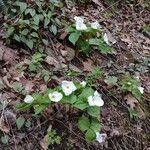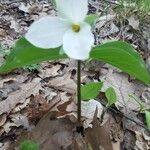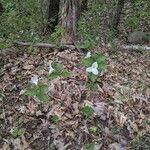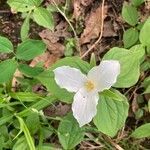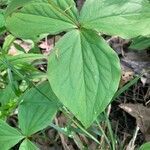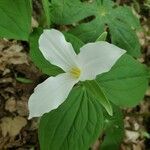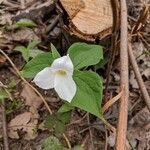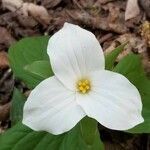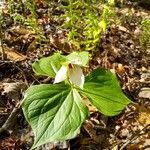A perennial plant. It grows 30-45 cm high and wide. The leaves are dark green and form a mound. They are in rings of three. The flowers are white, pink, purple or yellow with distinct veins. The sepals are green. The flowers are almost triangular in outline with 3 petals. The petals have wavy edges and are curved backwards. The flowers are 5-8 cm wide.
